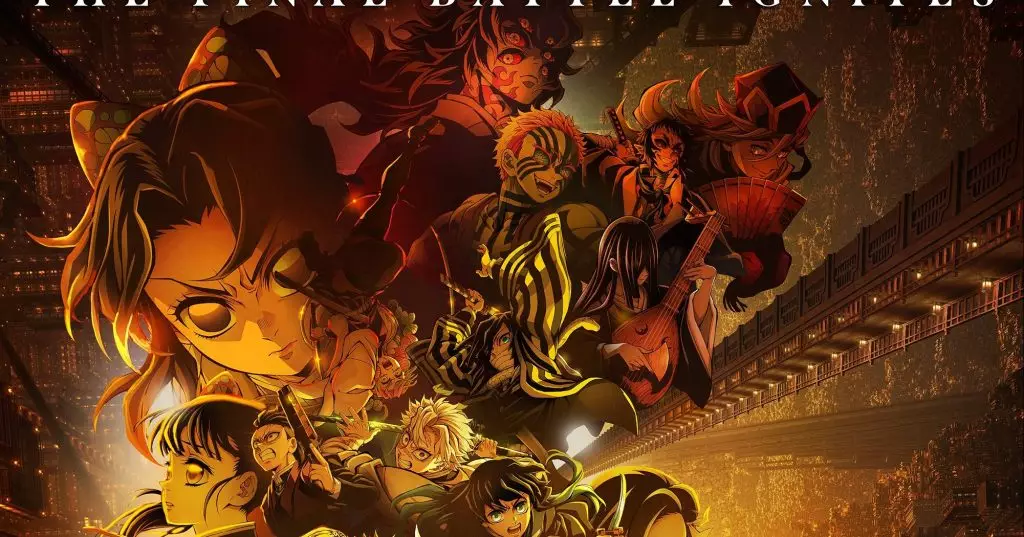The latest installment in the Demon Slayer franchise, *Infinity Castle*, has not only captivated Japanese audiences but has also redefined what success looks like in contemporary animation. Its record-breaking opening days, massive single-day earnings, and robust weekend numbers demonstrate a seismic shift in the cultural significance of anime beyond its traditional niche. While some may see this as just a passing trend, the scale and intensity of this response reveal a deeper revolution—an acknowledgment of anime’s capacity to command large-scale commercial and cultural influence comparable to Hollywood blockbusters.
This film’s remarkable performance, netting over 7.3 billion yen in just a four-day span, signals an industry that is no longer peripheral but central to mainstream entertainment markets. Its success underscores the evolution of anime from a niche to an economic powerhouse, capable of rivaling and surpassing traditional Western cinema. This shift raises critical questions about cultural dominance and the global appetite for stories rooted in Japanese traditions, aesthetics, and storytelling paradigms.
Moreover, the film’s exceptional box office figures suggest a loyal, expanding audience that spans generations. The combination of engaging narrative, compelling characters, and high-quality animation has created an entertainment experience that transcends language barriers. This gives anime a competitive edge not just in Japan but on the international stage, paving the way for further global integration of Asian media content.
Challenging Hollywood’s Cultural Hegemony
In an era where Hollywood films often dominate global box offices, *Infinity Castle*’s triumph signals a potential shift away from Western dominance in cinematic entertainment. Its surpassing of Hollywood benchmarks isn’t just about numbers; it’s about cultural resonance. The film’s success exposes the limitations of Western-centric media monopolies and highlights the importance of diversifying narrative perspectives.
Western filmmakers and studios should take note: audiences are hungry for stories that reflect different cultural backgrounds and aesthetic sensibilities. Demon Slayer’s victory is a testament to the potency of authentic storytelling rooted in Japanese folklore and values, resonating deeply with local and international viewers alike. This success can serve as a blueprint for a more inclusive, diversified entertainment landscape—one that moves away from monolithic Hollywood narratives towards a more pluralistic approach that recognizes and celebrates global diversity.
The international release plans for *Infinity Castle*, starting in North America and other regions, amplify this point. It demonstrates confidence that stories like these can transcend borders and carve out a sizeable market share. This marks a pivotal moment where regional cultural products challenge the Western hegemony, advocating for a more multi-centric global cinema ecosystem.
The Cultural Significance of the Anime Surge
At its core, the soaring numbers behind *Infinity Castle* reveal more than commercial triumph—they reflect a cultural awakening. Anime has begun to serve as a vessel of Japanese identity, history, and mythos, wielding influence far beyond entertainment. Its ability to evoke passion and loyalty from fans across the world signifies a shift in cultural capital, where stories rooted in specific traditions are embraced globally, opening doors for nuanced dialogues about cultural exchange and mutual appreciation.
However, this success also imposes a responsibility. As anime gains prominence, there is a need for creators, marketers, and international distributors to ensure that cultural narratives are handled responsibly and respectfully. The danger exists in commodifying authentic stories merely for profit, diluting their depth and significance. Genuine cultural exchange should be prioritized, fostering understanding rather than stereotypical or superficial portrayals.
Furthermore, *Infinity Castle*’s record-breaking figures expose a willingness among diverse audiences to engage with complex stories that include themes of resilience, family bonds, and societal values. It reflects a broader desire for emotionally meaningful content, challenging the often superficial nature of blockbuster filmmaking. This could influence global storytelling trends, encouraging creators worldwide to craft stories with more depth and cultural authenticity.
In sum, the meteoric rise of *Demon Slayer* indicates a paradigm shift—one that highlights the power of culturally rooted narratives to influence, inspire, and reshape the global entertainment landscape. As anime continues to break through international barriers, it beckons us to reconsider assumptions about cultural dominance and to embrace a more inclusive, interconnected future for storytelling.


Leave a Reply